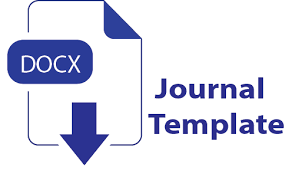Exploring the Intrinsic Elements of Tarbiyah Ash-Shibyan and Their Relevance to Islamic Religious Education
DOI:
https://doi.org/10.58223/dzilmajaz.v3i2.459Keywords:
Tarbiyah Ash-Shibyan, intrinsic elements, Islamic education, moral values, literary analysisAbstract
The classical scholars of the Malay–Indonesian archipelago paid great attention to Islamic education, leaving behind numerous works that reflect the integration of literature and moral pedagogy. One such work is Tarbiyah Ash-Shibyan by Muhammad Habibullah Ibn Rois Ibrohim, a poetic text that outlines moral guidance for children in their relationships with parents, teachers, peers, and society. This study aims to analyze the intrinsic elements of Tarbiyah Ash-Shibyan and explore its relevance to Islamic Religious Education, particularly in shaping moral character and ethical awareness. Employing a qualitative library research method with a descriptive-analytical approach, this research examines the text’s thematic structure, language style, and pedagogical message. The findings reveal that Tarbiyah Ash-Shibyan combines aesthetic beauty with moral instruction, functioning not only as a literary work but also as a medium of character education. The poetic form enhances memorization and internalization of moral values, making it a valuable tool in Islamic education. This study contributes to understanding how classical Islamic literature can serve as an effective model for moral and character education in contemporary contexts
References
Al-Attas, S. M. N. (2018). Islam and the Philosophy of Education. Kuala Lumpur: ISTAC.
Al-Jabiri, M. A. (2015). Bunyah al-‘Aql al-‘Arabi. Beirut: Markaz Dirasat al-Wahdah al-‘Arabiyyah.
Al-Qaradawi, Y. (2017). Akhlak al-Muslim. Cairo: Dar al-Syuruq.
Asy’ari, A. (2018). Tradisi Keilmuan dan Kesusastraan di Pesantren Madura. Surabaya: LKiS.
Azra, A. (2004). Jaringan Ulama Timur Tengah dan Kepulauan Nusantara Abad XVII dan XVIII. Jakarta: Kencana.
Braginsky, V. I. (1993). The Heritage of Traditional Malay Literature: A Historical Survey of Genres, Writings and Literary Views. Leiden: KITLV Press.
Hadi, S. (2020). Bahasa dan Sastra di Pesantren Tradisional Madura. Yogyakarta: UIN Sunan Kalijaga Press.
Hassan, N. (2016). Arabic Poetics and Religious Didacticism. Journal of Islamic Literature, 8(2), 45–62.
Ibn Manzur. (2005). Lisan al-‘Arab. Beirut: Dar Sadir.
Ibrahim, M. H. (2020). Analisis Tema Moral dalam Sastra Islam Klasik. Jurnal Al-Adab, 15(1), 33–47.
Johns, A. H. (1998). Cultural Borrowings and Transformations in Islamic Literature of the Malay World. Kuala Lumpur: Dewan Bahasa dan Pustaka.
Khalil, A. (2022). Adabiyyat Tarbawiyyah: Sastra sebagai Media Pendidikan Islam. Yogyakarta: UII Press.
Latif, M. (2019). “Kajian Naskah-Naskah Pesantren Madura: Analisis Filologis dan Nilai Pendidikan.” Jurnal Studi Keislaman, 7(2), 155–172.
Moleong, L. J. (2019). Metodologi Penelitian Kualitatif. Bandung: Remaja Rosdakarya.
Mustafa, R. (2021). Pedagogi Klasik dalam Kitab Kuning. Jurnal Turats Islamiyyah, 4(3), 112–128.
Muthohar, A. (2021). Islamisasi dan Budaya Lokal di Madura. Pamekasan: IAIN Madura Press.
Nasr, S. H. (2019). The Heart of Islam: Enduring Values for Humanity. New York: HarperOne.
Noer, D. (1980). Gerakan Modern Islam di Indonesia 1900–1942. Jakarta: LP3ES.
Rahman, A. (2019). Time and Morality in Classical Islamic Literature. Islamic Studies Review, 11(1), 66–83.
Rahman, F. (2019). “Kearifan Lokal dalam Islamisasi Madura.” Jurnal Penelitian Keislaman, 5(1), 23–40.
Rasyid, M. (2017). “Nilai-Nilai Akhlak dalam Kitab Tarbiyah Ash-Shibyan.” Al-Hikmah: Jurnal Pendidikan Islam, 9(1), 45–60.
Shihab, M. Q. (2018). Tafsir al-Mishbah: Pesan dan Kesan Al-Qur’an. Jakarta: Lentera Hati.
Sugiyono. (2020). Metode Penelitian Kualitatif, Kuantitatif, dan R&D. Bandung: Alfabeta.
Yusuf, A. (2021). Semiotika dalam Puisi Arab Klasik. Jurnal Bahasa dan Sastra Arab, 6(2), 59–74.
Zuhdi, M. (2017). Tradisi Pendidikan Islam di Nusantara. Jakarta: Kencana.
Downloads
Published
How to Cite
Issue
Section
License
Copyright (c) 2025 Mustaqim, Samsul AR, Khoirit Tamam

This work is licensed under a Creative Commons Attribution 4.0 International License.
